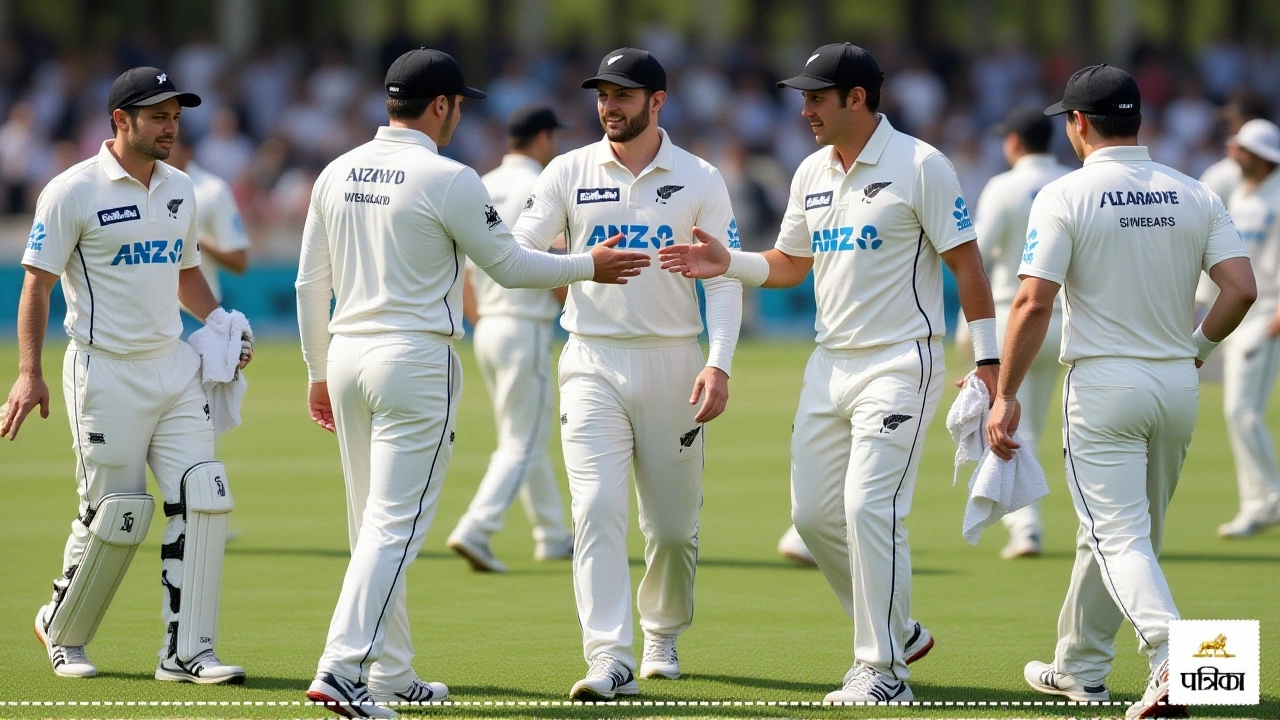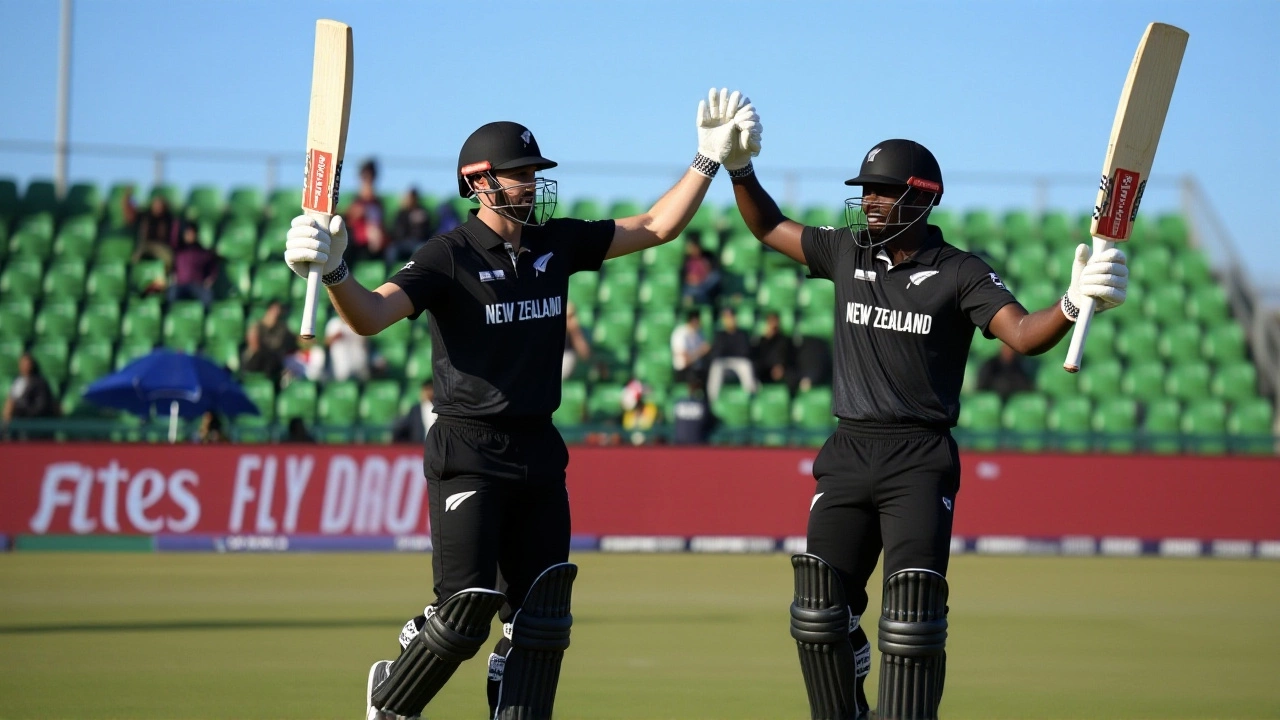
When New Zealand Cricket unveiled its 14-player BLACKCAPS T20I squad for the five-match series against the West Indies on November 2, 2025, the biggest news wasn’t just who was named—but who was coming back. Kyle Jamieson, the 207cm giant fast bowler, returned from a side injury that sidelined him during the ODI series against England in September. Alongside him, Ish Sodhi, the crafty leg-spinner, rejoined the fold after a brief absence following his last appearance against Australia in early October. But the real buzz? The call-up of 24-year-old Nathan Smith, an uncapped all-rounder from the Wellington Firebirds, who could make his international debut in front of a packed Eden Park crowd.
Return of the Giants
Jamieson’s return is a massive boost. His height and ability to generate steep bounce have made him one of the most feared T20 bowlers in the world when fit. He missed the last three ODIs due to a rib strain, and his absence was felt in tight finishes. Now, with the West Indies known for their explosive top order—led by Rovman Powell and Brandon King—New Zealand needs his raw power. "He’s not just a bowler," said Rob Walter, the BLACKCAPS head coach. "He’s a game-changer in the death overs. Having him back changes the entire dynamic." Sodhi, meanwhile, brings control and variation. At 32, he’s no longer the flashy spinner of 2021, but his ability to bowl in the powerplay and break partnerships has made him indispensable in T20s. His last outing—three for 34 in Mount Maunganui—proved he still has the guile. "He reads the game like a chess master," noted Wellington coach Grant Bradburn. "He doesn’t just bowl; he anticipates."Smith: The Dark Horse
Nathan Smith’s inclusion feels like a quiet revolution. He’s played 23 T20 matches for Wellington, scoring 512 runs and taking 21 wickets. He’s not flashy—he’s consistent. In the 2024-25 domestic season, he opened the batting and bowled the 16th over, often turning tight games into wins. Yet, he was overlooked for the Sri Lanka tours despite being in the squad. "He was always the guy who did the job when no one else could," Bradburn said. "Now, he gets his chance." Smith bats right-handed, bowls medium-fast, and fields well. He’s the kind of player who thrives under pressure. If he plays, he’ll likely bat at No. 6 or 7 and bowl two overs in the middle. His debut would mark the first time since 2019 that a Wellington Firebirds player has broken into the BLACKCAPS T20I side without prior international exposure.West Indies: A Rebuilt Unit
The West Indies squad, announced the same day, is a blend of experience and fresh blood. Captain Shai Hope leads a side missing key players like Ramon Simmons and Jediah Blades due to injury. In their place: 25-year-old Shamar Springer, a tall, aggressive seamer with a slingy action, and Matthew Forde, returning from a shoulder injury that kept him out since August. But the most surprising omission? Gudakesh Motie. The 30-year-old left-arm spinner, who took 11 wickets in his last three T20Is, was dropped after a string of poor performances. Selection chair Roger Harper didn’t mince words: "It’s not about talent. It’s about consistency. He’s been off the mark in three straight games. We’re giving him targeted work with Royals Sports Group before the SA20 and World Cup prep."
Williamson’s Farewell
On the same day the squad was announced, Kane Williamson confirmed his retirement from T20Is. The former captain, who debuted in 2010 against Pakistan in Dunedin, played 73 T20Is, scoring 1,912 runs and captaining the side in 42 matches. His calm leadership defined an era. "It’s time to focus on Tests and ODIs," he said in a quiet statement. "I’ve given everything to the T20 format. Now, I’m ready for the next chapter." His absence leaves a void. Not just in runs, but in presence. He was the steady hand in chaos. With him gone, the onus falls even heavier on Santner and Chapman to anchor the middle order.What’s at Stake?
This five-match series isn’t just about pride. It’s the final T20I test before Rob Walter names his preliminary squad for the ICC T20 World CupIndia and Sri Lanka in February 2026. Every performance matters. Jamieson’s return could secure his spot. Smith’s debut could earn him a permanent place. And for the West Indies? It’s about proving they’re still a force, even without their injured stars. The first match kicks off on the KFC T20I seriesEden Park in Auckland on November 5, 2025, at 2:15 AM AST. The series then moves to Nelson Park (Nov 9-10) and wraps up at University Oval in Dunedin on November 13.
Who’s Out?
New Zealand’s injury list reads like a who’s who of their T20 firepower: Finn Allen (foot), Lockie Ferguson (hamstring), Adam Milne (ankle), Glenn Phillips (groin), and Ben Sears (hamstring). All five were regulars. Their absence means less power-hitting and less pace. The BLACKCAPS now rely on depth—Bracewell, Neesham, and Ravindra to carry the batting, and Duffy, Foulkes, and Smith to fill the bowling gaps.What’s Next?
After the T20Is, the teams face three ODIs and a three-Test series before Christmas. For Smith, this is his first real chance. For Jamieson, a chance to prove he’s still elite. For the West Indies, a chance to silence doubters. And for New Zealand? A final audition before the biggest tournament of their year.Frequently Asked Questions
Why is Nathan Smith being considered for his T20I debut?
Nathan Smith has been a consistent performer for the Wellington Firebirds, scoring 512 runs and taking 21 wickets in 23 T20 matches. Despite being named in squads for Sri Lanka tours in 2024-25, he never got a game. His all-round skills—right-handed batting and medium-fast bowling—make him ideal for the current BLACKCAPS needs, especially with key players injured. His calm temperament under pressure has impressed selectors.
How does Kyle Jamieson’s return impact New Zealand’s bowling attack?
Jamieson’s height and ability to bowl yorkers at 140+ kph make him lethal in the death overs. His absence in the England ODIs left New Zealand vulnerable against aggressive finishers. His return gives them a genuine wicket-taking option in the 16th-20th overs, reducing reliance on spinners like Santner and Ravindra. He’s now the primary strike bowler alongside Duffy and Foulkes.
Why was Gudakesh Motie dropped from the West Indies squad?
Motie was excluded after a dip in form across three consecutive T20Is, where his economy rate rose above 9.5 and he failed to take a wicket in two matches. Selection chief Roger Harper stated it was a performance-based decision, not a lack of talent. Motie will undergo technical training with Royals Sports Group before the SA20 and T20 World Cup prep, suggesting he’s still in the long-term plans.
What’s the significance of this series for the ICC T20 World Cup 2026?
This is New Zealand’s final T20I series before naming their preliminary World Cup squad in early 2026. Players like Smith, Jamieson, and Sodhi are fighting for spots. The West Indies, meanwhile, are testing their depth after losing key bowlers. Both teams will use these matches to evaluate combinations, especially in high-pressure situations, before heading to India and Sri Lanka.
Where are the matches being played, and what’s the weather outlook?
Matches are in Auckland (Eden Park), Nelson (Nelson Park), and Dunedin (University Oval). November in New Zealand is early summer—mild days (18–22°C), occasional rain. Eden Park has hosted 12 T20Is since 2019, with the home side winning 8. Nelson’s ground is smaller, favoring batsmen, while Dunedin’s pitch tends to slow down, helping spinners like Sodhi and Akeal Hosein.
What happened in the last T20I between New Zealand and West Indies at Nelson Park?
In their last meeting at Nelson Park, New Zealand posted 177/9 in 20 overs, thanks to Devon Conway’s blistering 56 off 34 balls. West Indies, chasing, fell short at 168/9 in 19.5 overs. Ish Sodhi took 3/34, including the crucial wicket of Romario Shepherd, who scored 49. New Zealand won by 1 wicket, with the match ending on the penultimate ball—a reminder of how tight these contests are.